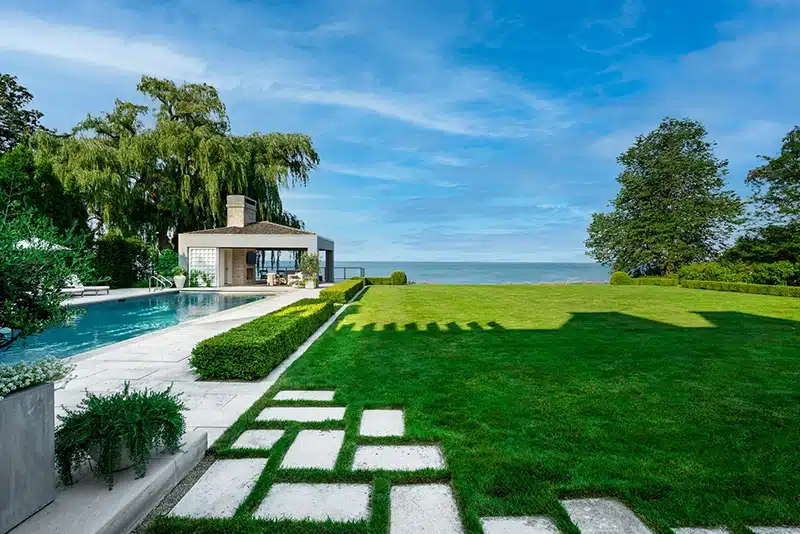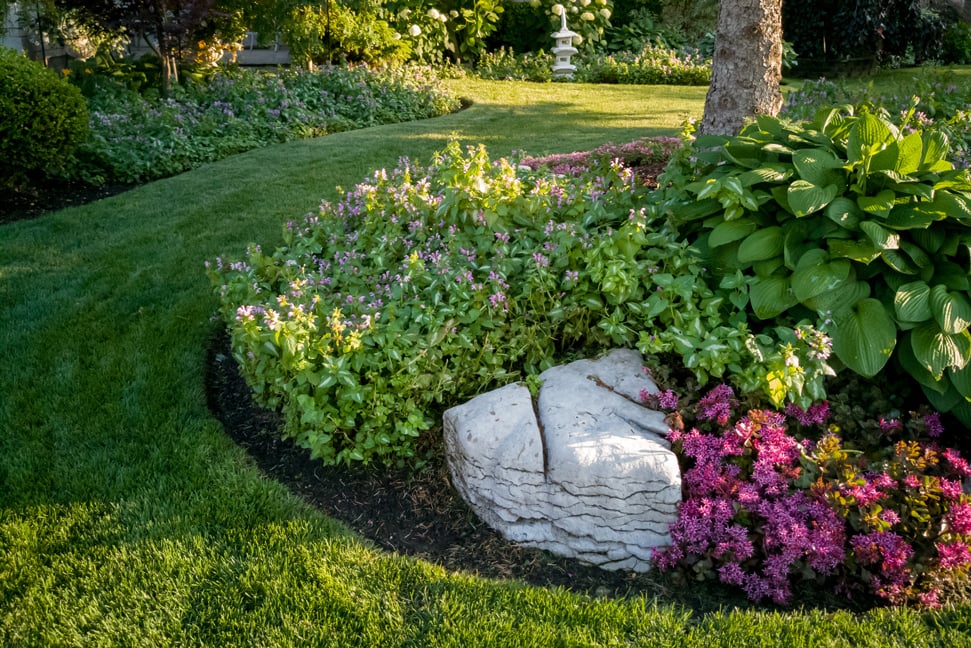Landscapers Las Vegas Teams Concentrating On Both Residential and Commercial Spaces
Landscapers Las Vegas Teams Concentrating On Both Residential and Commercial Spaces
Blog Article
The Value of Recognizing Different Kinds Of Landscape Design for Your Yard
Understanding the various types of landscape design is an important part in crafting a garden that not only shows personal preference yet also fulfills eco-friendly needs. Each landscaping style-- be it formal, home, sustainable, or metropolitan-- provides distinct advantages that can dramatically affect the general health and appearances of your outdoor space.
Benefits of Landscape Design Understanding
Recognizing the principles of landscaping offers various advantages for both newbie and experienced garden enthusiasts alike. A strong understanding of landscape design concepts makes it possible for people to create visually enticing and useful exterior rooms that straighten with their personal choices and the particular features of their gardens.
One substantial benefit is improved environmental health and wellness. Knowledge of lasting practices and native plants enables garden enthusiasts to grow communities that advertise biodiversity while reducing the demand for chemical fertilizers and pesticides. In addition, understanding dirt kinds and drainage can cause much healthier plant development and decreased disintegration.
Landscape design knowledge additionally enhances the visual value of a residential property. By learning more about style elements such as texture, range, and color, gardeners can develop cohesive and welcoming landscapes that raise curb appeal. This not just boosts personal enjoyment however can additionally boost residential or commercial property worth.
Furthermore, informed gardeners can conserve time and resources. Recognizing the right plants for particular conditions, such as light and wetness levels, makes certain that initiatives are not wasted on improper options. Inevitably, a detailed understanding of landscape design empowers people to make enlightened choices, cultivating a more rewarding gardening experience.
Introduction of Landscape Design Types
Landscaping includes a variety of methods and designs, each customized to satisfy the distinct demands and preferences of garden enthusiasts. Recognizing these varied kinds is vital for creating an outside area that aligns with individual tastes and environmental considerations.
One preferred type is standard landscape design, defined by structured layouts, well-defined flowerbeds, and making use of in proportion plantings. This design typically emphasizes a sense of order and consistency within the yard - Landscaping Company. In contrast, naturalistic landscape design concentrates on resembling the appeal of nature, utilizing organic forms and native plants to develop a more kicked back and casual setting
Lasting landscaping has acquired grip, promoting environmentally friendly methods that conserve water and lower chemical usage. This method often integrates xeriscaping, which utilizes drought-resistant plants suitable for arid climates. Furthermore, urban landscaping addresses the obstacles of limited space in city settings, typically making use of vertical yards and roof rooms to maximize plant.
Official Landscaping Described
Characterized by its careful layout and organized components, official landscaping develops an ambience of style and class in outside rooms. This style highlights proportion, geometric shapes, and well-defined lines, typically integrating polished bushes, topiaries, and organized blossom beds. The overall impact is a sleek and polished environment that draws attention to building features and boosts the elegance of the surrounding landscape.
In formal landscape design, pathways are usually straight and might be lined with uniform products such as block or rock. These courses often result in prime focus such as water fountains, sculptures, or decorative trees, further boosting the organized nature of the design. Color palettes have a tendency to be extra limited, focusing on unified mixes that promote a peaceful environment.
Water features in formal landscapes are typically made with accuracy, frequently appearing as rectangle-shaped or round pools. The careful placement of plants is crucial, with species picked for their capability to preserve a neat appearance throughout the seasons. Overall, official landscaping is excellent for those that appreciate order and beauty, supplying an ageless aesthetic that can dramatically raise the worth and appeal of outdoor areas.
Home Yard Features
Cottage yards frequently stimulate a sense of beauty and fancifulness, mixing a selection of plants in a relatively slipshod yet harmonious arrangement. Identified by their lush, casual layout, these yards generally feature an eclectic mix of flowering perennials, annuals, veggies, and herbs. This diverse planting not just develops aesthetic rate of interest but likewise draws in beneficial pests and advertises a well balanced community.
A crucial feature of cottage gardens is their use of traditional materials and frameworks. Rock paths, rustic secure fencing, and wood trellises are frequently incorporated to enhance the garden's enchanting charm. In addition, the incorporation of seating locations, such as arbors or benches, encourages relaxation within this serene environment.
Color plays a significant role in home yards, with an emphasis on soft pastels and dynamic hues that evoke a sense of fond memories. Flowers like roses, hollyhocks, and foxgloves are staples, usually intermingled with fragrant herbs such as lavender and thyme.
Home yards show an ideology of accepting nature's unpredictability, resulting in an one-of-a-kind and welcoming area. By prioritizing biodiversity and visual appeal, they develop a stunning setup for both yard enthusiasts and laid-back observers alike.
Lasting Landscape Design Practices
Incorporating lasting landscape design techniques is necessary for creating ecologically pleasant yards that prosper while decreasing their environmental influence. Commercial Landscaping. Lasting landscaping concentrates on the effective use resources, promoting biodiversity, and boosting the natural surroundings
One secret practice is choosing my company indigenous plants, which are well-adapted to local conditions and require much less water, plant food, and pesticides. This not only preserves sources but likewise supports regional wildlife, consisting of pollinators. Carrying out water-efficient watering systems, such as drip watering or rainwater harvesting, better saves water while guaranteeing that plants get adequate wetness.

Moreover, decreasing grass areas and incorporating hardscaping components can reduce maintenance and resource usage. These practices advertise a more sustainable landscape that requires fewer inputs and offers environmental advantages. By embracing these techniques, garden enthusiasts can create spaces that are not just lovely but additionally contribute positively to the atmosphere, cultivating an unified balance in between nature and human activity.

Final Thought
In final thought, an extensive understanding of various landscape design types is essential for creating a visually go to the website pleasing and ecologically sustainable yard. Eventually, accepting diverse landscaping strategies promotes an unified connection between exterior spaces and their environments, advertising long-term ecological equilibrium.
Comprehending the numerous kinds of landscaping is an essential part in crafting a yard that not only shows personal taste but likewise fulfills environmental requirements. Each landscape design design-- be it formal, cottage, sustainable, or urban-- provides distinctive benefits that can considerably affect her latest blog the overall wellness and looks of your exterior room. In comparison, naturalistic landscaping focuses on mimicking the beauty of nature, utilizing natural types and native plants to develop a much more kicked back and casual atmosphere.
In addition, metropolitan landscaping addresses the obstacles of limited area in city environments, frequently utilizing upright gardens and rooftop areas to make best use of plant.
In final thought, an extensive understanding of different landscaping kinds is necessary for producing a visually pleasing and eco sustainable garden. (Landscape)
Report this page